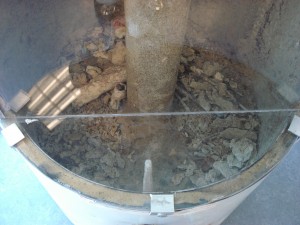
Ever notice a crusty white or green substance on your shower wall, showerhead or faucet? It’s called lime scale or scale deposits, and it forms when the calcium in water separates and begins to accumulate.
Although not as visible, this same process occurs inside both storage tank and tankless water heaters to varying degrees, depending upon the hardness of the water in your area. Randy Oshiro, Assistant Manager of Engineering at Noritz, explains how this happens and how to eliminate it in a tankless unit.
“Scale is formed when the heat energy inside a tankless water heater separates calcium from water,” explains Oshiro. “Those calcium deposits will accumulate on the heat exchangers over time and, left unchecked, lower your water heater’s efficiency and life span.”
Essentially, the built-up scale makes heat transfer within the tankless unit more difficult. As a result, the unit has to work harder in order to heat the water to the set-point temperature. As with anything that is strained, an overworked water heater can potentially give out long before its time. Meanwhile, it will unnecessarily waste energy through its inefficient operation.
Detecting scale buildup is not always easy. Fortunately, many Noritz tankless water heaters come with scale detection software technology. This technology measures changes in heat transfer inside the unit to figure out if there’s too much scale. If it detects that heat transfer has slowed, it sends an error message that it’s time to descale.
For those units that do not include this software, Oshiro recommends relying on experience when deciding when to descale. “After installing your water heater, schedule a maintenance checkup in one year. If, during that checkup, your plumber notices significant scale buildup, you will know that you should descale at least once per year. If not, you can go longer,” advises Oshiro, adding that Noritz does plan to implement scale detection software on all future products.
We’ve mentioned descaling, but what is it exactly, and how is it done? “Descaling refers to neutralizing the calcium deposits,” states Oshiro. “If you’ve ever poured vinegar on a clam shell, you probably noticed that it disintegrated into a milky liquid. The same principle applies to getting rid of scale.”
To descale a tankless water heater, Noritz recommends pumping kitchen-grade vinegar through the system for about an hour. Although a plumber is recommended, if you have the right equipment and ability, Oshiro says it can be a do-it-yourself job. Noritz provides descaling procedures in this FAQ.
When you descale your tankless water heater, all of the calcium deposits will dissolve just like that clam shell, and you will once again have a fully operational and efficient unit.
